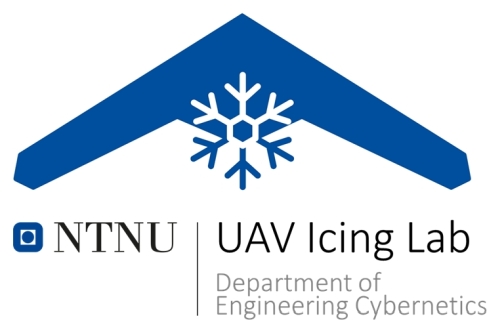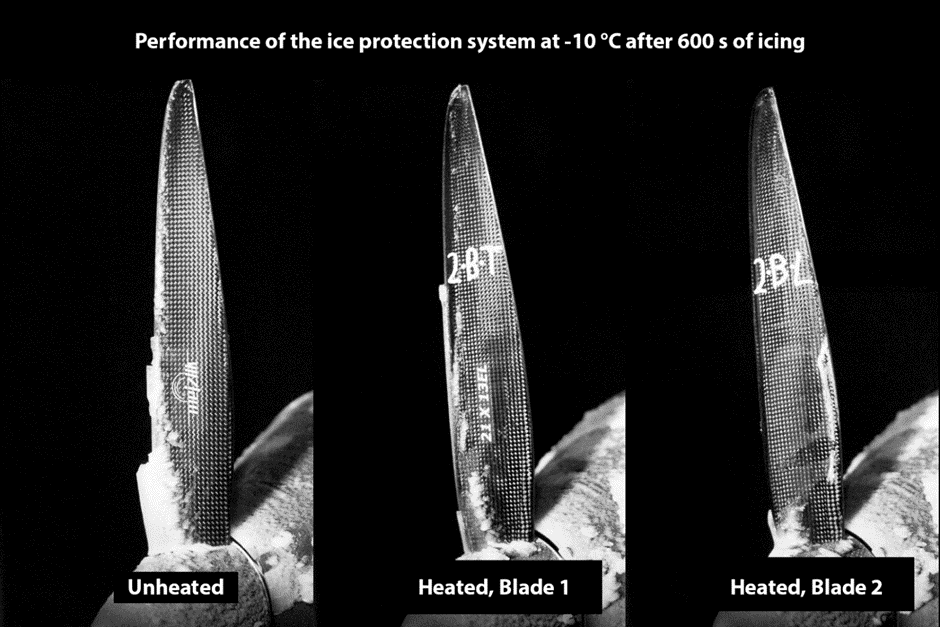The NTNU UAV Icing Lab, together with Mejzlik Propellers, and UBIQ Aerospace have developed a system to protect the propellers of UAVs when flying in icing conditions. In clouds in cold conditions, the propeller can collect ice and reduce the aerodynamic efficiency of the propeller. The developed electro-thermal ice protection system prevents ice accretion and retains propeller performance in icing conditions. Our research opens new possibilities for safe and reliable UAV operations in challenging weather environments.
Ice accretion will decrease the propeller’s performance by disturbing the airflow around the propeller blade. This will lead to a significant loss of thrust and strong vibrations. Propellers are very sensitive to icing and ice up very fast – within 100s the propeller can lose more than 80% of its efficiency. In addition, vibrations exceeding 10G can damage the drive train. These effects are a large hazard to the UAV and can lead to the loss of propulsion and subsequent loss of aircraft.

We used state-of-the-art CFD techniques to engineer an advanced propeller ice protection system tailored for in-flight use during icing conditions. The system incorporates carbon fiber heaters within the propeller blade, deterring ice formation and facilitating the shedding of any formed ice.
The developed ice protection system was able to prevent ice accretion at a temperature of -5°C, and at lower temperatures, it was able to reduce the impact of atmospheric icing on the propeller significantly.
This collaborative effort with UBIQ Aerospace, the UAV Icing Lab and Mejzlik Propellers represents the first step in developing a mature ice protection system for UAVs. This will enable UAV operations in cold-climate regions.
Reference: Müller, N.C., Løw-Hansen, B., Borup, K.T., Hann, R. (2023). UAV icing: Development of an ice protection system for the propeller of a small UAV. Cold Regions Science and Technology, 213, 103938. doi.org/ 10.1016/j.coldregions.2023.103938
Text: Nicolas C. Müller

